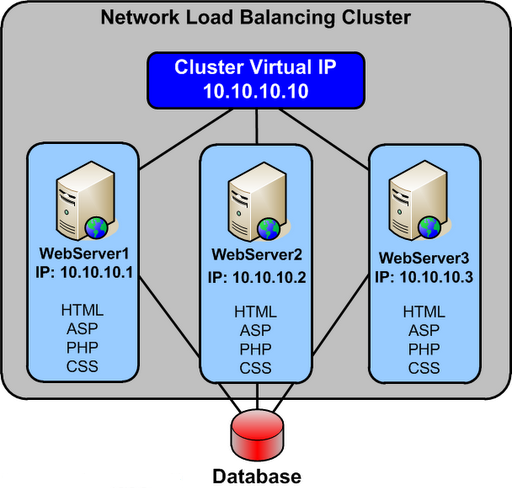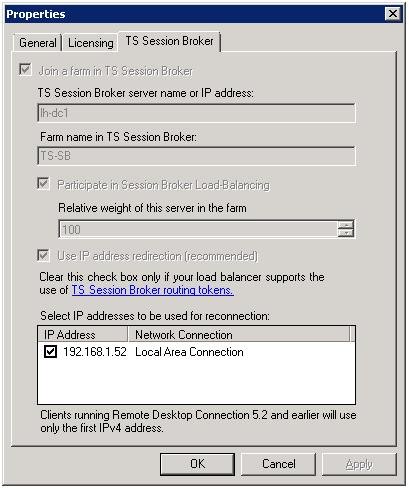

The IP address redirection option in the RD Connection Broker configuration must be unchecked for this to work.

The LoadMaster persistency timeout value is irrelevant here - it is a feature of the RD Connection Broker. If the terminal servers support a RD Connection Broker, the LoadMaster will use the "routing token" supplied by the RD Connection Broker to determine the correct host to connect to. If this persistence mode is enabled, when a user reconnects, the LoadMaster will try to connect the session to the same server. This is where the Persistence Mode of Terminal Service comes in.

Windows terminal services load balancing windows#
This allows that user to come back to the screen they were working on, with all the same windows open and applications running where they had left off. If a user disconnects from his/her session without logging out, it is preferable to maintain persistence with the server that he/she originally connected to. Round Robin, Least Connection, Adaptive, etc. Upon first connection, a server is allocated using the standard scheduling methods, i.e. This configuration is intended to allow the LoadMaster to balance Microsoft Terminal Services across multiple servers. The type of the service can always be changed manually if needed. If the port is set to anything else, the service will be configured as "Generic". If it uses port 3389 then it will be configured for terminal services. The system tries to automatically detect the type of Virtual Service based on the port of the Virtual Service.If the Virtual Service uses por 443, then it will be configured as a HTTP/HTTPS service. Setting up a Virtual Service to balance Microsoft Terminal Servers is very similar to setting up any other Virtual Service. 2 Load Balancing Microsoft Terminal Services However, the content is in sync with the latest LoadMaster LTS firmware. This document has not required substantial changes since 7.2.48.3 LTS. Published with LMOS version 7.2.48.3 LTS. This document is intended to help anyone who wishes to learn about or implement load balancing on Microsoft Terminal Services using the Kemp LoadMaster.
Windows terminal services load balancing how to#
It describes in detail how to configure the LoadMaster using the LoadMaster Web User Interface (WUI). This document describes various aspects of configuring the Kemp LoadMaster for use with Microsoft Terminal Services. They maximize the total cost-of-ownership for web infrastructure, while enabling flexible and comprehensive deployment options. Kemp products optimize web and application infrastructure as defined by high-availability, high-performance, flexible scalability, security and ease of management. Our products' versatile and powerful architecture provide the highest value, while enabling our customers to optimize their businesses that rely on Internet-based infrastructure to conduct business with their customers, employees and partners. Kemp leads the industry in driving the price/performance value proposition for application delivery and load balancing to levels that our customers can afford.


 0 kommentar(er)
0 kommentar(er)
